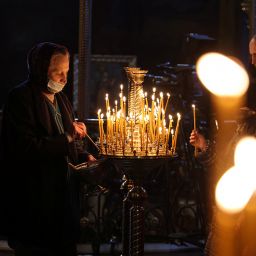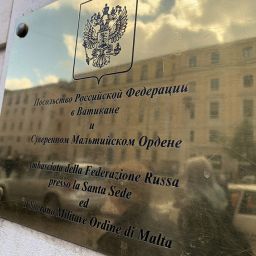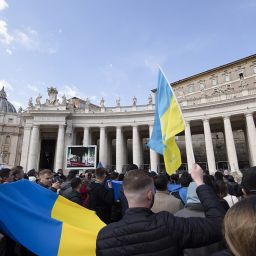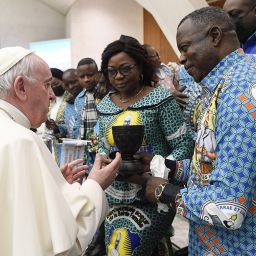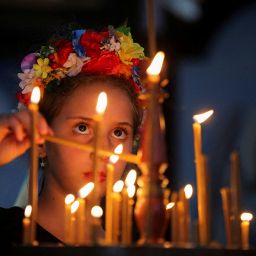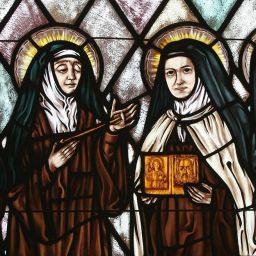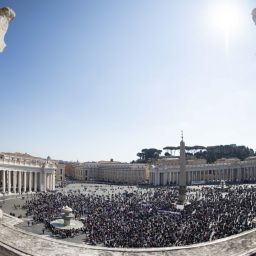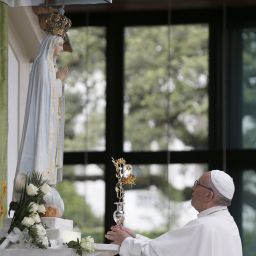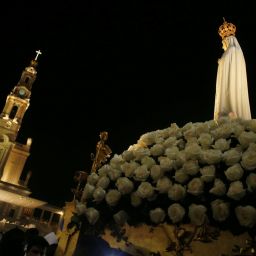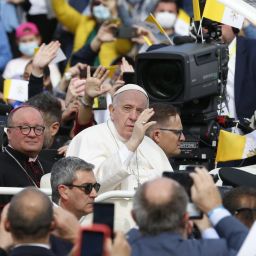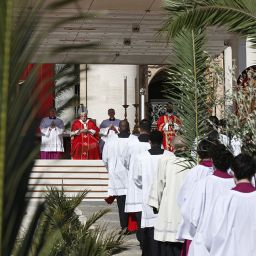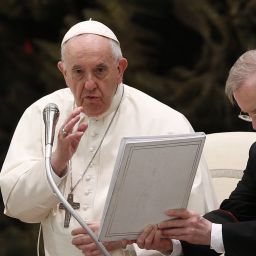By Amy White
The Texas Catholic
Following the death of Pope Francis on April 21, the University of Dallas’ Dr. Susan Hanssen, a history professor on UD’s Irving and Rome campuses, and Dr. Ron Rombs, a theology professor and dean and director of UD’s Rome campus, offered guidance on what Catholics can expect during the current “interregnum,” the period between Pope Francis’ pontificate and the election of the next pontiff of the Catholic Church.
Pope Francis, 88, died on Easter Monday after suffering a stroke, leading to heart failure and a coma, according to Vatican News. That day, Cardinal Kevin J. Farrell, former bishop of the Diocese of Dallas, formally verified the death of the late pontiff and oversaw the sealing of the papal apartment at the Apostolic Palace and of the former pope’s residence at Domus Sanctae Marthae. As the “camerlengo” or chamberlain, of the Holy Roman Church, Cardinal Farrell is entrusted with the safeguarding and administration of the temporal goods and rights of the Holy See during the papal vacancy. However, Hanssen clarified, the camerlengo is not an “interim pope.”
“We’re in a period of an empty seat,” she said. “No one holds that authority until a pope is elected.”
The funeral
Beginning April 23, Pope Francis’ body was placed in state at St. Peter’s Basilica for the public to pay their respects prior to his funeral. The funeral Mass for the pope will be held in St. Peter’s Square on the morning of April 26. Hanssen noted that this date falls within the octave of Easter, making the solemn ceremony somewhat “liturgically anomalous.”
Following the funeral, the pope’s coffin was moved to St. Peter’s Basilica and then he will be moved to the Basilica of St. Mary Major, where the simple wooden casket will be buried. Pope Francis will be the first pontiff in 122 years to be buried outside of the Vatican, Hanssen said, but she clarified that “it’s not absolutely unprecedented that popes be buried outside of St. Peter’s Basilica.”
“It was very typical before 1870 for popes to be buried in the Lateran church,” the history professor said, and “many popes have also chosen to be buried at St. Mary Major, which is the oldest and largest church dedicated to Our Lady in Rome.”
Novendiales, an official nine-day period of consecutive Masses for the repose of the former pope’s soul, will begin on the day of Pope Francis’ funeral, continuing a period of mourning that was initiated on the date of his death. The conclusion of Novendiales will mark the conclusion of the official mourning period.
The conclave
On April 22, the College of Cardinals gathered for the first of its pre-conclave meetings of cardinals, called general congregations, which are meetings to prepare for the conclave and attend to any pressing Church business.
As of April 23, the date of the conclave, a meeting of cardinals to elect a new pope, has not been announced. However, a conclave typically begins about 15 days after the death of a pope, Rombs said.
During a conclave, cardinals under 80 years old as of the day of the “sede vacante,” or “vacant see,” gather in the Sistine Chapel of the Apostolic Palace to begin the process of selecting a new pontiff. The gathering is shrouded in secrecy: An “extra omnes” command, meaning “all outside,” is given prior to the conclave, directing all who are unauthorized to remain in the Sistine Chapel to leave before the secret conclave begins; and cardinal-electors take oaths to maintain the secrecy surrounding the election of the pope.
“None of the cardinals are supposed to communicate with anyone outside of the conclave and only discuss amongst themselves,” Hanssen explained. “It is a way of guarding the integrity of the process from outside meddling.”
Once the conclave begins, the timeline of the process is uncertain.
“Historically, there have been reasons for very long conclaves, reasons for very short conclaves,” Rombs said, citing wars, famine, and onerous travel as factors. “We live in a time in which I anticipate these things will move pretty quickly,” he added, but “only the cardinals inside know how long that will take.”
Hanssen noted that the past two conclaves, which elected Pope Benedict XVI and Pope Francis, both concluded quickly. She guessed that this trend may continue, which could suggest that the next pope may be selected by early to mid-May. Rombs, however, noted a “peculiar aspect” of this conclave that may affect its length.
“(Pope Francis) appointed a number of cardinals from all over the world, and that’s wonderful,” Rombs said, but “it could be a slower conclave merely because this group of cardinals don’t know each other as well, and so they need time to pray together and to talk and to discern how they feel the Holy Spirit is moving them.”
During the conclave, the group of cardinal-electors may cast multiple ballots a day. To validly elect a pope, a two-thirds majority of votes are needed. After the votes have been counted, the ballots are burned. If the cardinal-electors are unable to reach the two-thirds majority, black smoke emerges from a chimney on the roof of the Sistine Chapel, signaling a lack of consensus. If the two-thirds majority is reached, white smoke signifies that a new Vicar of the Church has been elected.
“God does mighty things through his human agents and instruments,” Rombs said, reflecting on the Church’s method of electing a new pope. “There’s a lot of grace in the process.”
Cutline for featured image: Cardinals from around the world line up in the Vatican’s Sistine Chapel March 12, 2013, to take their oaths at the beginning of the conclave to elect a successor to Pope Benedict XVI. The following day, on the fifth ballot, they elected Cardinal Jorge Mario Bergoglio of Buenos Aires, Argentina, who chose the name Francis. (CNS photo/Vatican Media)


